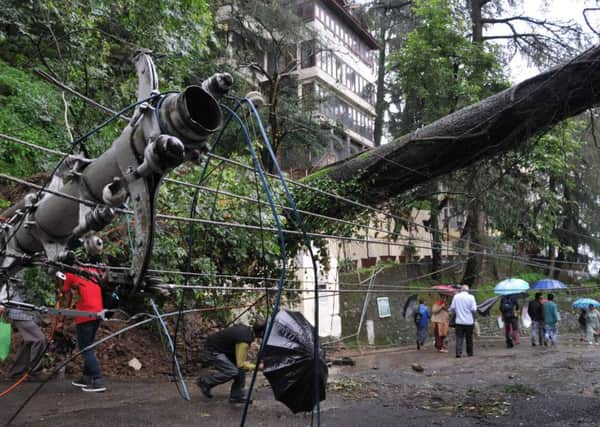Ten rare lions killed in devastating Indian floods


At least 81 people died in mudslides, collapsed homes or high waters in Gujarat state, while thousands were forced to evacuate their homes.
The rains also killed at least ten of the country’s 523 lions — the last members of the subspecies left anywhere in the wild — as well as prey animals, including more than 80 spotted deer and 1,670 Asian antelope called blue bulls, according to a report submitted over the weekend to the federal environment ministry in New Delhi.
Advertisement
Hide AdAdvertisement
Hide AdThe animal deaths underline welfare groups’ concerns about keeping all of the lions in a single location.
Conservationists argued successfully in India’s Supreme Court in 2013 for some to be relocated to a second sanctuary far away, to prevent the population from being hit all at once by natural disaster or disease. But Gujarat has resisted moving any of the lions.
“There is no cause for panic,” CN Pandey, a top forest official in Gujarat, said. “Conservation efforts are ongoing.”
The lions died in two badly flooded areas near their sanctuary in Gir National Forest in southern Gujarat.
Mr Pandey said a single day of rain, on 26 June, had dumped 26cm (10.24in) of water in the area and turned a 100sq km (40sq mile) area “into an unbroken sheet of water”.
Other lions were found in “weak health and shocked condition”, and were given treatment and food supplements, the report said, according to the Press Trust of India.
Hundreds of park workers, animal activists and villagers launched a search for the lions, and found about 80 “roaming safely in their territory, killing wild animals and blue bulls from the surrounding areas”, the report said.
The heavy early monsoon rains in June saw nearly 9,000 people evacuated to higher ground in the worst-hit rural areas of Amreli, Rajkot and Bhavnagar districts of Gujarat, which had been suffering from a drought before the rains hit.
Advertisement
Hide AdAdvertisement
Hide AdMore than 1,000 Hindu pilgrims were stranded on the mountain paths leading to the shrines of Kedarnath and Badrinath in northern Uttrakhand state because of the rains.
India’s financial capital of Mumbai was also badly hit when torrential showers put a stop to train services and led to a breakdown in the city’s public services.
The monsoon covered nearly the entire country, flooding parts of Gujarat in western India and Assam state in the north-east, while a swollen river breached its banks in northern Jammu-Kashmir state.
Heavy rains triggered house collapses in the worst-affected Saurashtra region, with some reports saying these had been the worst floods in 90 years.
The coastal district of Amreli was the worst affected, where more than 600 villages were reported to be flooded.